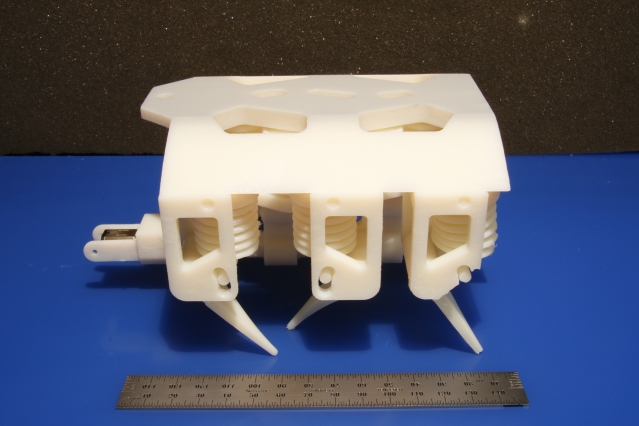MIT Engineers Can 3D Print Entire Functional Robots In One Step
Creating a robot can be a grueling process for engineers. Production and assembly require time and money. But now, a team of researchers from MIT’s Computer Science and Artificial Intelligence Laboratory(CSAIL) has developed a 3D-printing method that allows for one-step creation of functional robots.
The technique demonstrates, for the first time, a method for 3D printing robots with solid and liquid materials at the same time and allows the team to automatically create dynamic robots with no assembly, using a commercial 3D printer.

The team calls the approach “printable hydraulics” and believes it brings us a step closer to quick fabrication of functional machines.
“All you have to do is stick in a battery and motor, and you have a robot that can practically walk right out of the printer,” said Daniela Rus, CSAIL Director who oversaw the project and co-wrote the paper.
Using its new system, the team 3D printed a six-legged crawling robot equipped with 12 hydraulic pumps embedded within its body in just 22 hours, as well as some parts for existing robots, like a soft rubber hand for the Baxter research robot.
Of all the printed parts on the tiny robot, some of the most important were the sets of “bellows” printed directly into its body. The bellows use fluid pressure that is translated into a mechanical force in order to move the robot. In place of the bellows, the team also played with a 3D printed gear pump that produced continuous fluid flow.
One challenge the team needed to overcome was dealing with liquids. While 3D printing has come a long way, printing with liquids is still difficult and messy.
With the “printable hydraulics” method, an inkjet printer deposits individual droplets that are 20 to 30 microns in diameter and continues layer-by-layer from the bottom up. After each layer is created, the printer uses a high-intensity UV light to solidify all of the materials other than the liquids. Each material layer consists of a photopolymer, which is a solid, and “a non-curing material” — technically a liquid.
“Inkjet printing lets us have eight different print-heads deposit different materials adjacent to one another, all at the same time,” said MIT postdoc Robert MacCurdy. “It gives us very fine control of material placement, which is what allows us to print complex, pre-filled fluidic channels.”
Going forward the team would like to reduce printing time, which it believes will come as printers continue to improve.
Story via MIT/CSAIL.

Comments are closed, but trackbacks and pingbacks are open.